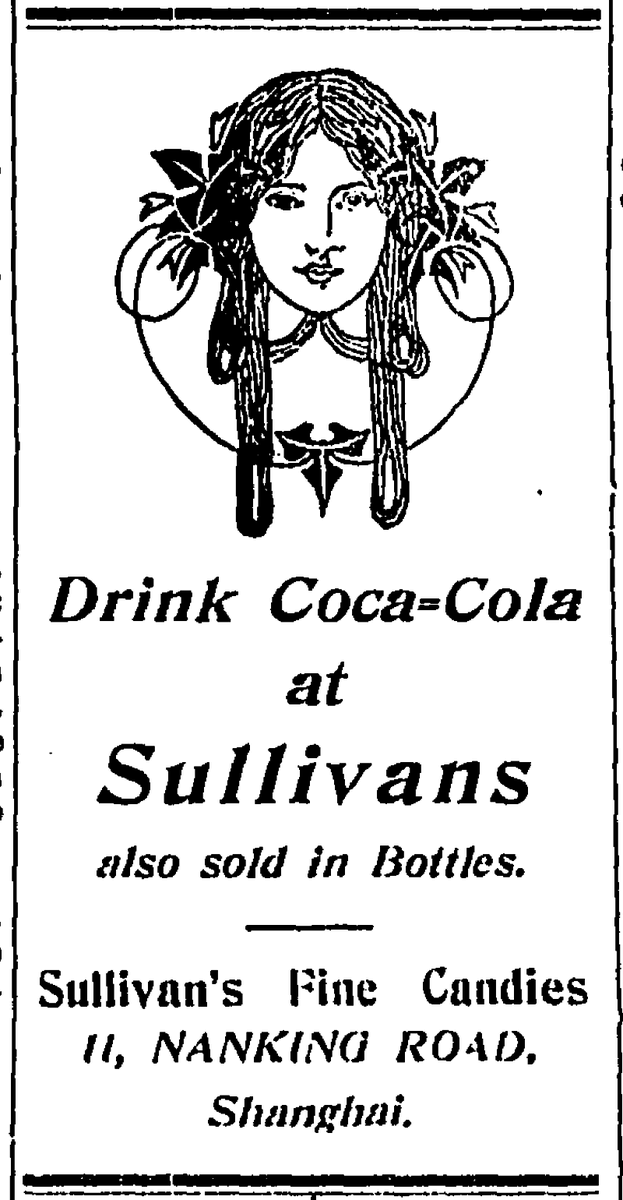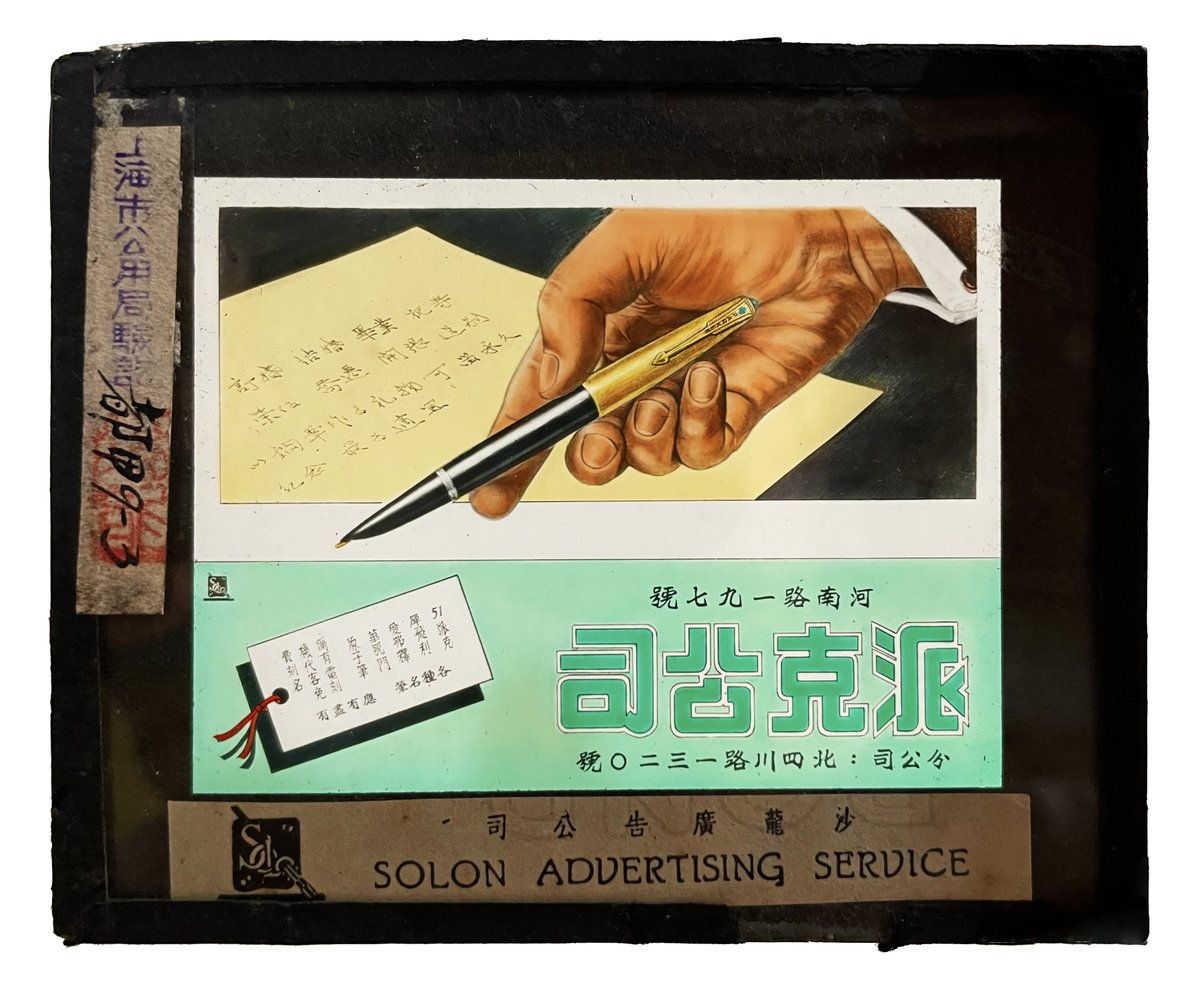This intriguing 1928 calendar poster, advertising the „Beacon” cigarette brand, was not only created by the most versatile Chinese commercial artist of the 20th century, but also leads us to the story of the first & largest foreign-founded tobacco manufacturer in China... 🧵👇/1 

The construction of the China Eastern Railway from 1897 to 1902 attracted many Russians to settle in the rapidly developing northern Chinese city of Harbin. Among them was Karaite-Jewish tobacco merchant Aron E. Lopato with his wife & two sons Eli Aaronovitch (1874-1936)... /2 

..and Abraham Aaronovitch (1877-1953). Initially, they traded with cigarette & pipe tobacco from Russia, selling it to the growing Russian population of Harbin. In 1902, or according to other sources, 1903, the family opened a tobacco store on Harbin’s main street Kitayskaya.. /3 

..close to the Hotel “Moderne”, together with a workshop of 7-8 Chinese employees manufacturing Russian-style cigarettes. This small business in 1904 became the Havanna Tobacco and Cigarette Factory, employing 28 workers. With time, the business thrived & amassed sufficient... /4 

..capital to acquire modern equipment, enabling the transition to machine-based cigarette production. According to Chinese sources in 1909, or as indicated in an English language report from 1931, it was in 1912, that the two brothers E.A. and A.A. formally incorporated the... /5 

..business under the name of A. Lopato and Sons (老巴奪父子烟草公司), expanded the production with additional machines & up to 700 employees. The cigarettes they produced were in great demand in Northern Manchuria and on the Sino-Russian border, which attracted the attention.. /6 

..of the powerful tobacco behemoth British American Tobacco (BAT). Reportedly already in 1913 BAT invested in the Russian enterprise & in April 1914 acquired a majority stake, after which the company was re-incorporated under the name A. Lopato & Sons Limited in Hong Kong. /7




The two brothers remained minority shareholders and managed the company as co-directors together with a B.A.T. representative. In 1920 the construction of a large new factory started in the Nangang district of Harbin, on what is today No 69 Yiman Street. In 1924 the company... /8








..was also granted a 15-year concession to operate a factory in the Russian city of Chita &in 1928 a third factory is mentioned in the Manchurian city of Mukden. This latter factory manufactured cigarette brands such as Beacon, Sower, Gold Key, Treasure or Moon Land with... /9








..“mouthpieces of the British & American-type” targeted at Chinese consumers, while the Harbin factory produced variants under the names of “Airship”, “Turkish” and “Antik” with “Russian-style mouthpieces” and different flavor for the Russian population of China and Siberia. /10








This explains the colorful variations of advertisements from A. Lopato & Sons, some for cigarettes with English & Chinese names, some with Cyrillic names & some even mixed with all 3 languages. Posters & packaging for the Russian target audience were designed with Western... /11




..key visuals, while the Chinese-oriented brands were advertised with typical Chinese themes of the time, such as the one of the calendar poster from our collection, showing a Chinese beauty with her parasol by the lake, surrounded with traditional Chinese architecture. /12 

The signature in the lower left corner of our poster identifies the artist as Xie Zhiguang (谢之光). Xie lived from 1900 to 1976 & besides Hang Zhiying (杭樨英), covered in our previous post, was Chinas most prolific commercial artist, producing... /13 https://t.co/azxmJObhio


https://twitter.com/MOFBACN/status/1668111155473301505?s=20


..innumerable advertisement calendar posters, black-and-white ads for newspapers, covers for romance-literature magazines and for the well-known pictorial Liangyou. He was a student of Zhou Muqiao and of the prestigious artist Zhang Yuguang. In the mind-1920s Xie was most... /14








..likely on the staff of the advertising agency owned by Carl Crow, as a 1925 reference in the Shanghai Hong List to Xie’s English name T.K. Zia, romanized from the Shanghainese pronunciation, indicates. In his later career Xie worked primarily for two large Chinese-owned... /15








..tobacco companies, the Nanyang Brothers Tobacco Company & the Huacheng Tobacco Company. What set Xie Zhiguang apart from his contemporaries, was the incredible versatility of his oeuvre. Initially trained in classical Chinese paintings, he moved to newspaper adverts in... /16








..line drawing, calendar posters & hangers depicting both modern beauties & classical ladies, then after the war transitioned to social & industrial realism-style propaganda posters until 1960, when he was appointed to a professorship in the newly founded Shanghai Chinese... /17








..Painting Academy, where he returned to paint in the traditional Chinese style. You may wonder about the fate of the Lopatos of Harbin and their company. In 1929, the family made the decision to sell their remaining stake in the business to British American Tobacco and... /18








..subsequently relocated to France. Under B.A.T.'s management, the factory continued its operations as A. Lopato & Sons, reaching its zenith with a workforce reportedly exceeding 3,000 employees. By 1939, the factory achieved a production volume of 3 billion sticks annually. /19 

During the war, the Japanese seized control of the company, renaming it the Central Manchurian Tobacco Company. In 1945, the company reverted to its familiar name, A. Lopato and Sons until 1949, when the business was taken over by the Chinese government, leading to its... /20 

..nationalization & subsequent transformation into the Harbin Cigarette Factory. The former building of the Lopato factory in Harbin still exists & today houses a small museum with a commemorative plaque, celebrating its Russian origins in the early 20th century. In the... /21 

..1980s the Harbin Cigarette Factory revived the Lopato name and started to manufacture a cigarette brand under the name “Lao Ba Duo” which is sold in China to this day. /22






The Tobacco Tale of A. Lopato & Sons from Harbin: China’s Largest Foreign-Founded Cigarette Manufacturer #china #history /The endmofba.org/2023/07/08/the…
• • •
Missing some Tweet in this thread? You can try to
force a refresh






















